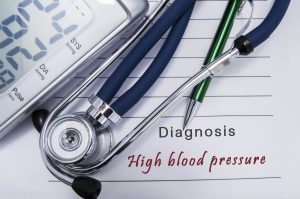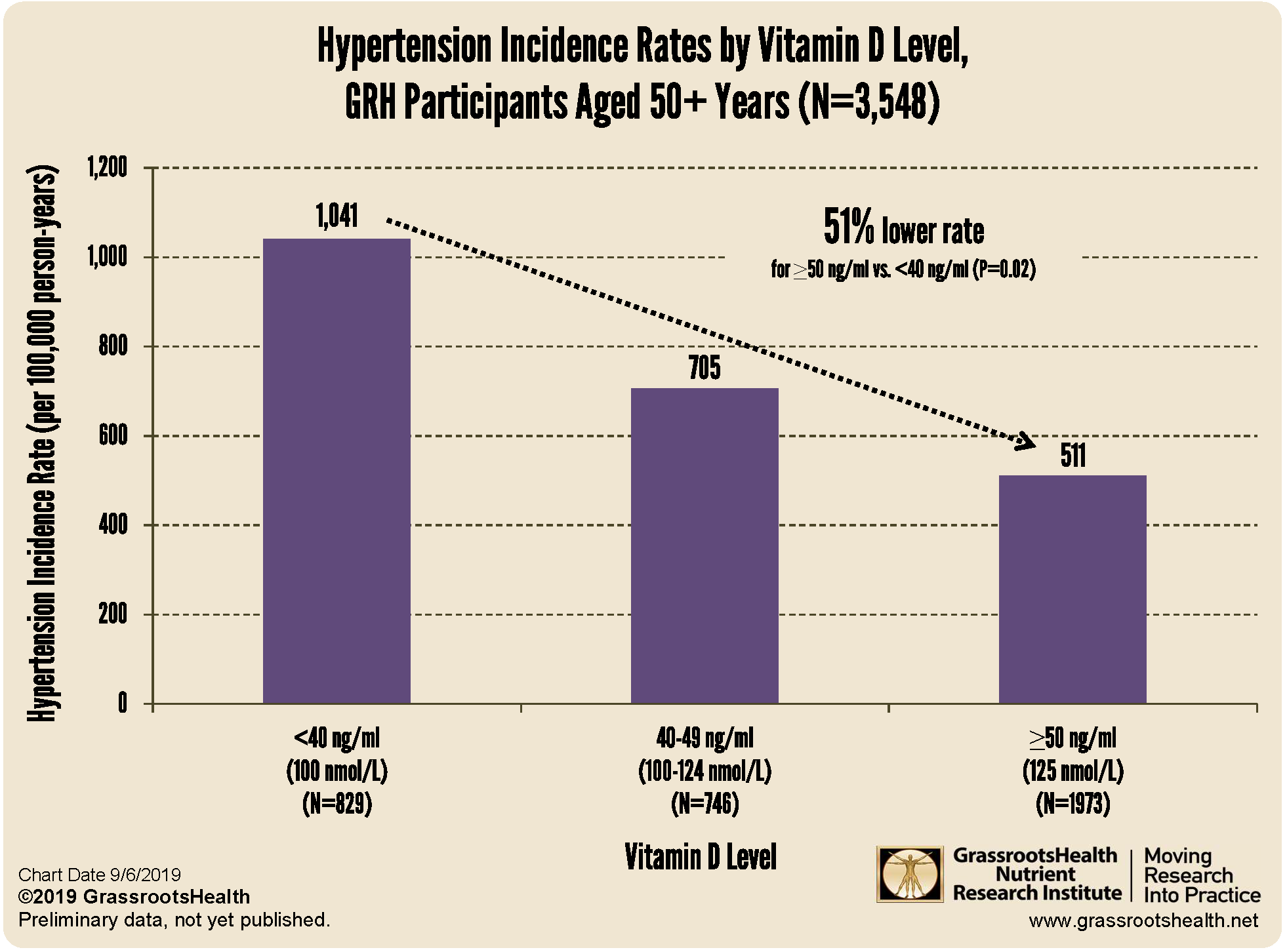Published on September 10, 2019
 Studies have shown that low vitamin D levels are a risk factor for cardiovascular disease. Using the data you provided for the GrassrootsHealth Nutrient Research Institute study, we assessed the association between vitamin D level and risk of being diagnosed with hypertension (high blood pressure) among participants aged 50 years and older.
Studies have shown that low vitamin D levels are a risk factor for cardiovascular disease. Using the data you provided for the GrassrootsHealth Nutrient Research Institute study, we assessed the association between vitamin D level and risk of being diagnosed with hypertension (high blood pressure) among participants aged 50 years and older.
We compared hypertension incidence rates according to vitamin D level. The incidence rate among those with vitamin D levels of 50 ng/ml (125 nmol/L) or higher was 51% lower than the rate among those with vitamin D levels less than 40 ng/ml (100 nmol/L) (P=0.02).
This suggests that increasing vitamin D levels above 40 ng/ml could reduce hypertension risk. While we did not have enough participants in the lower vitamin D level range (less than 20-30 ng/ml) to analyze as its own group, it is likely that the risk reduction would be even higher if we were able to compare the rates in those lower levels.
Are you getting enough vitamin D?
Testing your vitamin D level regularly and taking daily steps to keep it at a target level of 40-60 ng/ml (100-150 nmol/L) is important for all stages of health. Find out your levels today! Log on to the shop (click the link below) to get your tests and see for yourself if your level can be improved.
Make sure you track your results before and after, about every 6 months!
How can I track my nutrient intake and levels over time?
To help you track your supplement use and nutrient levels, GrassrootsHealth has created an online tracking system called myData-myAnswers. For each specific supplement, you can track what days you take it, how much, and many other details. This will help you know your true supplemental intake and what patterns of use work for you to reach and maintain optimum nutrient levels. Check it out today!







